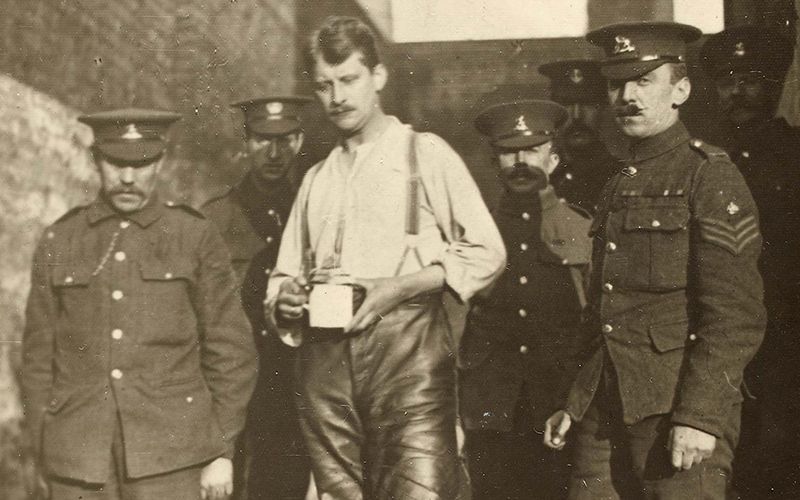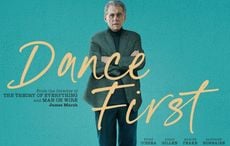Nothing can prepare you for the flood of emotion. You can brace yourself, but there really won’t be a thing you can do about it.
Visiting the new National September 11 Memorial Museum, built in the footprints of the fallen towers, will break your heart in pieces.
But there is comfort in knowing that after many years of planning and controversy, planners have built a memorial that is equal to the memory of the men and women who died on that day. I can make that claim with certainty after taking a media tour on Monday.
Almost 3,000 people lost their lives in the terrorist attacks that morning, or over two-thirds of all the people killed during the three decades of The Troubles in Ireland. It’s a shockingly high figure, and the new museum has found unforgettable ways to convey the sheer scale and horror of that morning in a way that informs rather than overwhelms.
To reach the new museum you must walk past the two new memorial fountains, built on the empty footprints of the Twin Towers themselves, commemorating absence in a place that was once filled with their presence.
It’s a simple idea, but it works so well that it draws the thronging crowds directly to them. I watched some of the visitors place a single flower on a stem in the space along the railings where they found their loved ones’ names.
Some 550 gallons of tumbling water pour out of the memorial fountain each moment, down into the imprint of each tower, and then into a smaller space hidden from view, drawing attention to the deeper idea that something – and someone – is missing.
The security check in the entrance lobby of the new museum is state of the art, a mournful consequence of the terrorist attack that changed our world. You have to pass through a full body-imaging scanner that looks like something from a science fiction film, but is sadly now just a security fact.
Progressing toward the escalator, your eye will alight on one of the immense, twisted metal columns that visitors to the former World Trade Center will instantly recognize as taken from the original lobby windows. It’s a jolting experience, a bit like seeing a ghost, which in fact it is.
The approach to the ticket desk gives the first idea of sheer scale of the museum itself. Entrance is $24 (the museum is self-financing) and it begins in a long and very dark corridor that is filled with unseen voices.
Passing by the September 11, 2001 panel that announces the fateful day, your eyes begin to adjust to the semi-darkness. One by one the voices of the 9/11 families and witnesses begin to fill the air. They recall how they felt the moment they heard the news.
“It was such a beautiful morning,” said one.
“I saw the plane crash into the first tower and I dropped my coffee on the ground,” says another.
“I heard screaming and everyone around me started to run,” a voice recalls.
“I was so happy my son stayed home that day,” said someone else.
As they speak their words are projected, as is the breaking news of the attacks in every language.
Beyond them you see the stunned faces of people on the ground reacting to the unfolding horror, their hands raised to their mouths in total disbelief.
When the World Trade Center was being built in the late 1960s they created massive ramps leading down to the construction site. Now, in an echo of that original plan, visitors must make their way along a sloping floor to the first part of the museum itself.
When you reach it your jaw will drop. You are standing in the underground heart of Twin Towers, where the foundation built to brace it against the Hudson River is perfectly preserved.
It’s the first of many unforgettable experiences in this extraordinary museum. Going downstairs you pass by the preserved Vesey Street stair, the so-called “Survivors Staircase,” where hundreds made their way to safety before the towers collapsed.
You have to pass by a section of the original steel façade to do this, where the girders on display were once part of the north façade of the north tower, the point of impact area where the hijacked Flight 11 pierced the building from the 93rd to the 99th floors.
Across the main floor, an artwork by Spencer Finch quotes Virgil. “No Day Shall Erase You From the Memory Of Time,” it reads. This first part of the museum is built inside the original footprint of tower one, and it is staggeringly powerful.
A long, dark wall leading into an interior area gives you no idea what awaits as you turn the corner. Every face who lost life in the attack is framed in a bank of photographs that reach from floor to ceiling.
Seeing this for the first time makes you grasp what an outrage it was, what an immense sin against life. Smiling portraits, so many of them with Irish names, so many of them still so young, look out at you from a frozen moment in time. It hits you so hard you need to take a moment to recuperate.
There are touch screen displays beside the thousands of portraits. Type a last name and the photograph of the person you are searching for appears. Touch that image and a host of other images of the same person follows it.
He or she lived once, and here they are in photographs. Type an Irish name, see multiple lost lives appear. It’s so poignant and so powerful it takes your breath away.
There is so much more to see. The museum remembers the attack on the Pentagon. It recalls the failed hijack of Flight 93, which was foiled by a group of courageous passengers. There are short documentary films about the destruction and rebuilding of the site, and the rise of the new Freedom Tower.
But it’s the simple human details, like the dust covered shoes preserved in a glass case, or the uniform of FDNY Battalion Chief Ryan, or the half destroyed Engine Company 21 truck led by Captain William Francis Burke, Jr. that shock you with their combination of the everyday and the extraordinary.
Some have already lamented that the new museum has taken their private grief and made it a public tourist attraction, turning the worst day of their lives into a photo opportunity. But I suspect the majority of these critics have yet to visit the museum itself. What I saw was a deeply empathetic and sensitive commemoration of a turning point in human history.
The Irish note is everywhere in this fearful tale, from the beginning to the end. The only standing column from the original building, located near the exit of the museum, contains a prayer by the first recorded victim of the attack, the beloved Father Mychal Judge.
The FDNY chaplain, his impulse on the day was his impulse everyday, to help. His prayer is still helping; it’s the last thing you see there.




Comments